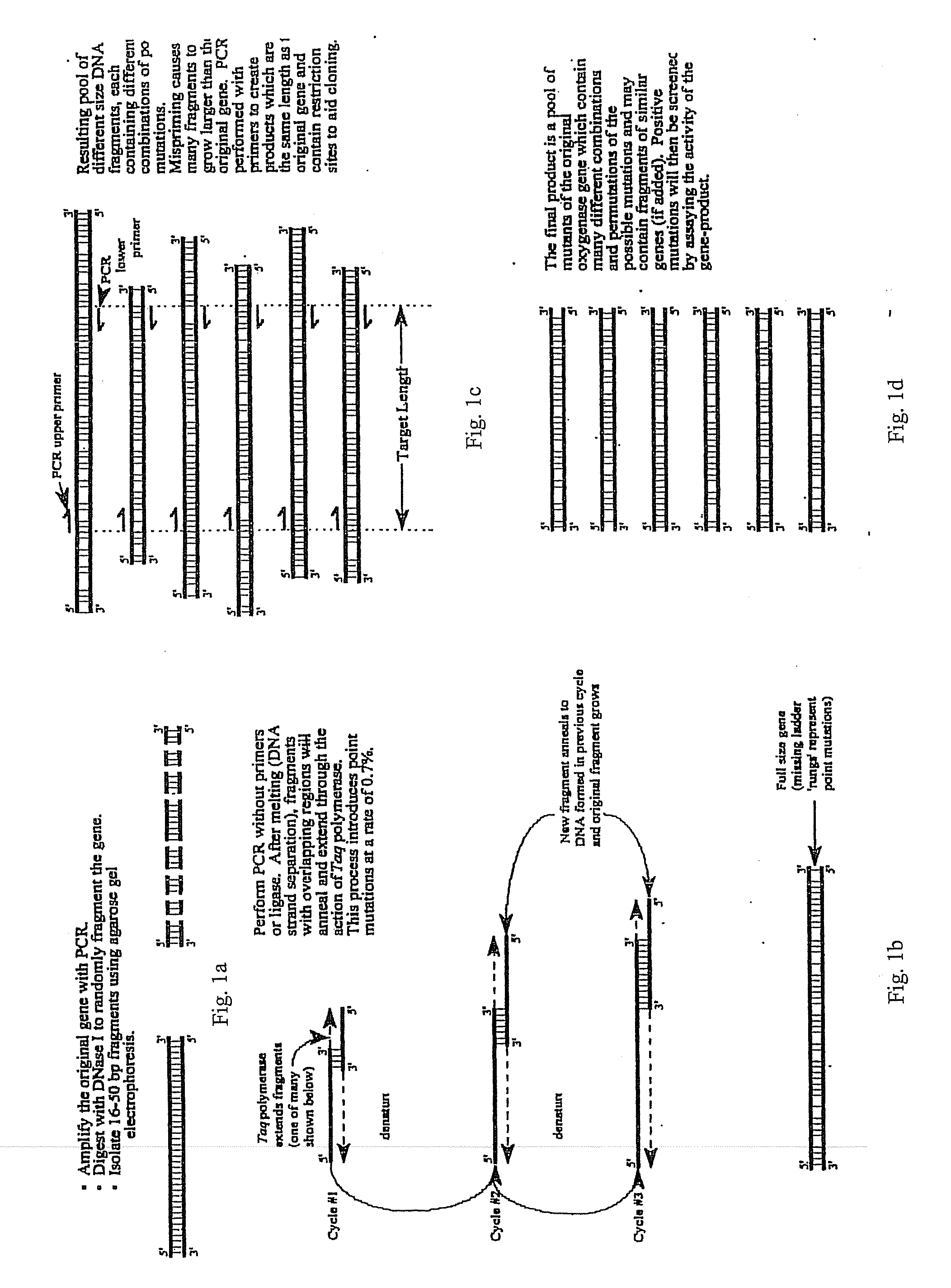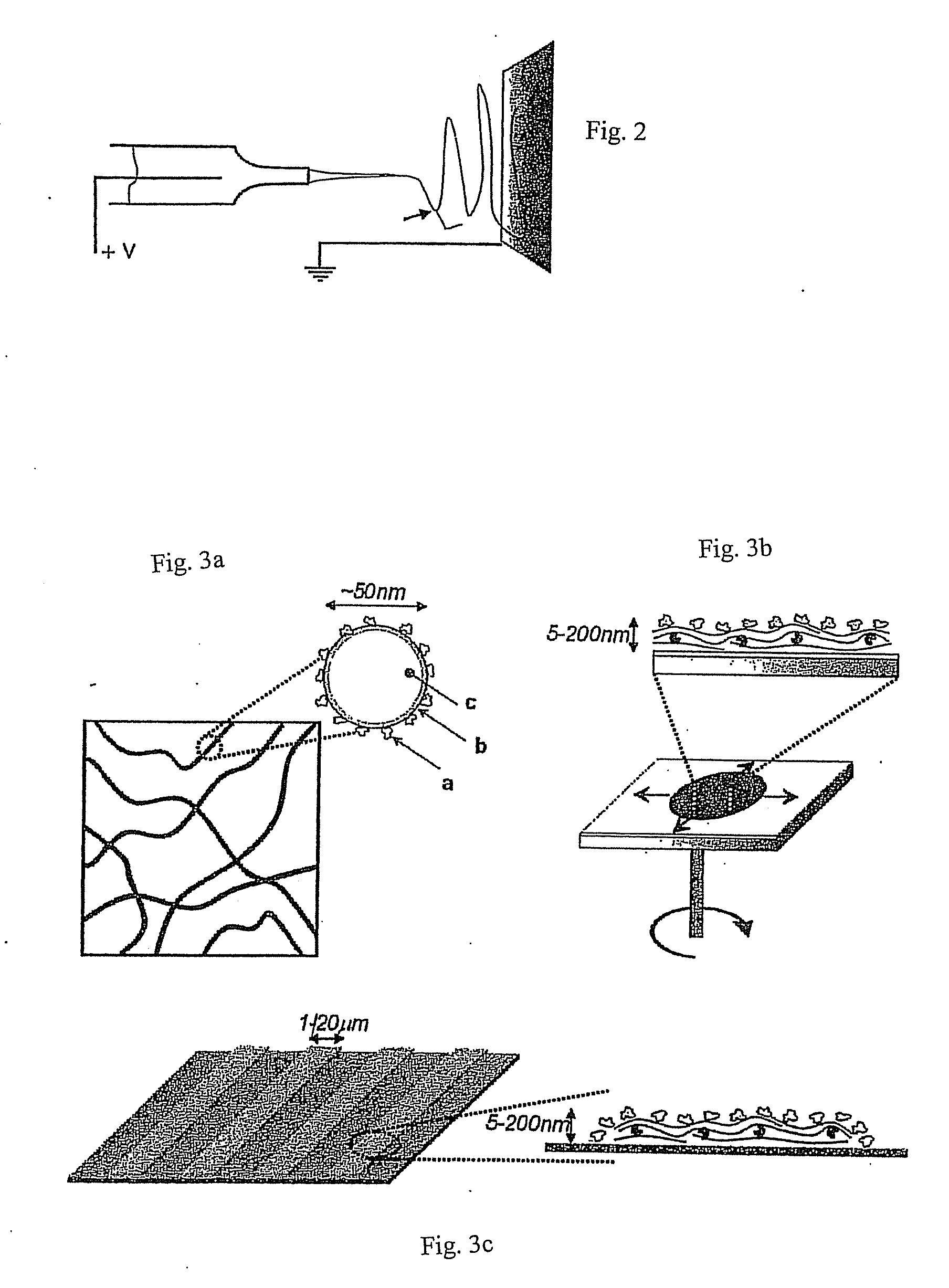Dental materials, methods of making and using the same, and articles formed therefrom
a technology of dental restorative materials and materials, applied in dental prosthetics, dental impression caps, dentistry, etc., can solve the problems of micro-leakage between the restorative material and the tooth, difficult bonding and sealing of the tooth structure, and no dental restorative material is currently availabl
- Summary
- Abstract
- Description
- Claims
- Application Information
AI Technical Summary
Benefits of technology
Problems solved by technology
Method used
Image
Examples
example 1
Silicification in Solution Using R5 as Biocatalyst
[0093] Silicification involves simultaneous hydrolysis and condensation reactions. The hydrolysis reaction involves hydrolysis of a silicon precursor compound Si—(OR)4, wherein each occurrence of R can be independently a hydrogen or a C1-C10 alkyl. In one embodiment, the silicon precursor compound is silicon alkoxide Si(OEt)4 (tetraethyl orthosilicate or “TEOS”). The hydrolysis produces silanol (Si—OH such as Si(OH4), silicic acid) and liberates alcohol molecules. The condensation reaction involves the condensation of two silanol substrates to form siloxane bonds (Si—O—Si), which will eventually form the silica network and the release of water molecules. The water molecules can then hydrolyze another alkoxide precursor molecule. Such sol-gel reactions are common to commercial formulations, but require elevated temperatures and acid or base catalysts. In biocatalyzed mineralization, polypeptides or other charged polymers act as bioca...
example 2
Generation of New Mineralization Biocatalysts
[0098] To initiate the random mutagenesis for enhanced silica synthesis, a combinatorial DNA mutagenesis approach (DNA shuffling) coupled with a high-throughput (spectrophotometric) can be used. Bacterial surface display (expression) would allow screening of a large number of silica-forming enzymes, as the shuffled protein is expressed on the cell surface, becoming available for reaction with the orthosilicic acid. In particular, the gene for the mature 208 amino acid silicatein from the sponge Tethya aurantia could be shuffled initially for enhanced precipitation of silica. The method of surface display would be that of Cho et al. using the ice nucleation protein. Since no cofactors (for example, NADH) are required for the precipitation of silica, surface display would allow use of bacteria while also avoiding cell lysis and protein purification steps during the screen.
[0099] The surface display plasmid with the silicatein gene fragmen...
example 3
Silicification in Solution Using Poly(L-Lysine) (PLL) as Biocatalyst
[0105] In this example, studies of silicification reactions in solutions were conducted to evaluate the effect of several reaction parameters such as solvent and catalyst composition on the formation of minerals.
[0106] Silica formations from tetramethyl orthosilicate (TMOS) using three different PLL biocatalysts (low, medium, and high molecular weight as described in Example 18) were analyzed by a calorimetric molybdosilicate assay. As direct hydrolysis and condensation from TMOS was not possible with PLL, TMOS was first prehydrolyzed to form silicic acid. Next, the silicic acid from the prehydrolyzed TMOS was exposed to PLL in solution and the UV absorbance as a function of time was measured and is shown in FIG. 18. The measured absorbance reflects the level of unreacted silicic acid in the reaction medium.
[0107] As can be seen from FIG. 18, the conversion to silica saturates after about 40 minutes for each PLL ...
PUM
| Property | Measurement | Unit |
|---|---|---|
| diameter | aaaaa | aaaaa |
| thick | aaaaa | aaaaa |
| temperature | aaaaa | aaaaa |
Abstract
Description
Claims
Application Information
 Login to View More
Login to View More - R&D
- Intellectual Property
- Life Sciences
- Materials
- Tech Scout
- Unparalleled Data Quality
- Higher Quality Content
- 60% Fewer Hallucinations
Browse by: Latest US Patents, China's latest patents, Technical Efficacy Thesaurus, Application Domain, Technology Topic, Popular Technical Reports.
© 2025 PatSnap. All rights reserved.Legal|Privacy policy|Modern Slavery Act Transparency Statement|Sitemap|About US| Contact US: help@patsnap.com



